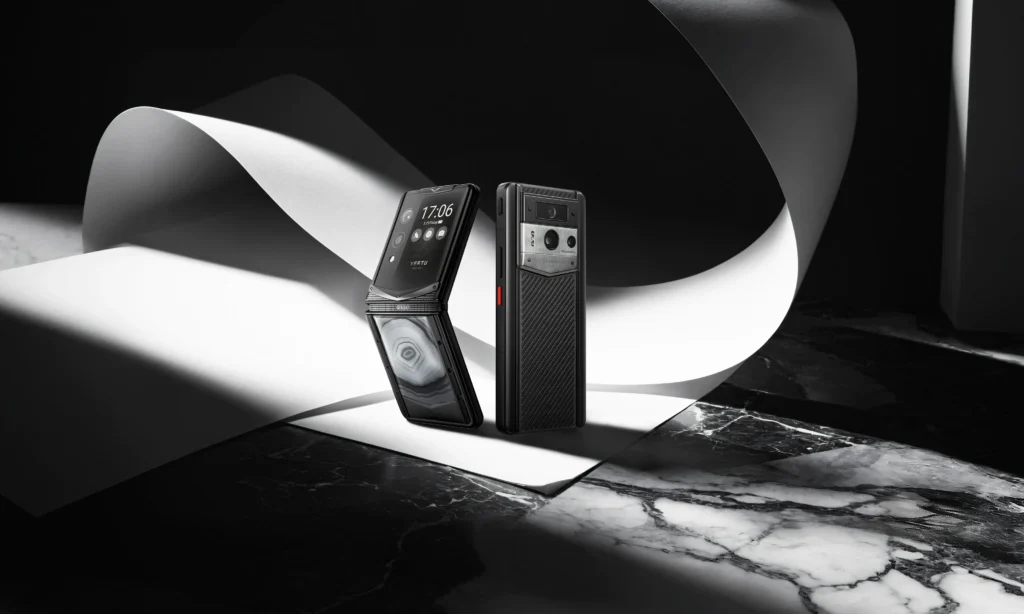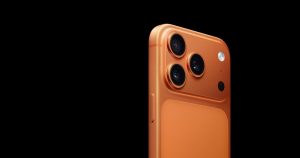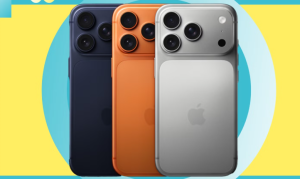
Feeling confused about whether to stick with your trusty 4G phone or jump to the latest 5G model in 2025? This guide cuts through the jargon to help you make the smartest upgrade decision.
Key Takeaways:
- The fundamental differences between 4G and 5G technology.
- If a 4G phone is still a practical choice for your needs in 2025.
- The transformative benefits and potential of 5G connectivity.
- How 5G coverage varies across the USA and what it means for you.
- Factors to consider when deciding between a 4G and 5G smartphone.
- Recommendations for top 4G and 5G phones available this year.
Understanding the Core: 4G vs. 5G Technology
The leap from 4G to 5G isn't just a number change; it represents a significant evolution in mobile network capabilities. Understanding these differences is crucial for making an informed upgrade.
What Exactly is 5G and How is it Different from 4G LTE?
5G, the fifth generation of cellular technology, is designed to be faster, more responsive, and capable of connecting far more devices than its predecessor, 4G LTE. While 4G revolutionized mobile internet with faster speeds and better streaming, 5G aims to enable entirely new applications and experiences that were previously impossible. Think of it as moving from a highway to a superhighway with multiple lanes for different types of traffic.
Speed, Latency, and Capacity: The Key Performance Differences
The most noticeable improvements with 5G lie in its core performance metrics:
- Speed: 5G offers significantly higher download and upload speeds, potentially reaching gigabits per second, compared to 4G's megabit-per-second speeds. This means faster downloads, smoother high-definition streaming, and quicker access to cloud services.
- Latency: This refers to the delay between sending a command and receiving a response. 5G dramatically reduces latency to near-instantaneous levels (as low as 1 millisecond), which is critical for real-time applications like online gaming, remote surgery, and autonomous vehicles. 4G latency can range from 50 to 100 milliseconds.
- Capacity: 5G networks can handle a much larger density of connected devices simultaneously without performance degradation. This is essential for the growing Internet of Things (IoT) ecosystem, smart cities, and crowded venues.
Decoding 5G Bands: mmWave, Sub-6 GHz, and What They Mean for You
5G operates across different frequency bands, each with its own characteristics:
- mmWave (millimeter wave): These are ultra-high frequencies offering incredibly fast speeds and massive capacity but with a limited range and poor penetration through obstacles like walls. Ideal for dense urban areas and stadiums.
- Sub-6 GHz: This band offers a balance of speed, range, and penetration, making it more suitable for widespread coverage. It's the backbone of most current 5G deployments, providing speeds that are still a significant upgrade over 4G.
- Low-band 5G: Similar to existing 4G frequencies, this offers the widest coverage but the slowest 5G speeds, often comparable to good 4G performance.
Here's a quick comparison of their characteristics:
| Feature | mmWave 5G | Sub-6 GHz 5G | Low-band 5G | 4G LTE |
| Speed | Extremely High (Gbps) | High (Hundreds of Mbps) | Moderate (Tens to ~100 Mbps) | Moderate (Tens of Mbps) |
| Latency | Very Low (1-5 ms) | Low (10-20 ms) | Moderate (20-50 ms) | High (50-100 ms) |
| Range | Very Short | Medium | Long | Long |
| Penetration | Poor (easily blocked) | Good | Excellent | Excellent |
| Use Case | Dense urban, stadiums, venues | City-wide, suburban coverage | Rural, broad coverage | General mobile broadband |
4G Phone Realities: Still a Viable Option in 2025?
Despite the excitement around 5G, 4G phones haven't disappeared, and for many, they remain a perfectly capable choice.
What Can You Still Expect from a 4G Phone?
A modern 4G phone in 2025 can still provide an excellent mobile experience for most daily tasks. You can expect:
- Reliable internet browsing and social media use.
- Smooth video streaming in HD.
- Capable app performance for everyday productivity and entertainment.
- Good call quality and messaging services.
- Decent battery life.
When Does a 4G Phone Make Sense for Your Needs?
A 4G phone might be the right choice if:
- Your primary usage involves standard web browsing, social media, and video streaming.
- You don't engage in bandwidth-intensive activities like competitive online gaming or downloading large files frequently.
- You are on a tight budget and a 4G phone offers significant cost savings.
- You live in an area with limited or non-existent 5G coverage.
- You prioritize longer battery life, as 5G modems can sometimes consume more power.
Cost-Effectiveness: The Budget-Friendly Advantage of 4G
One of the most compelling reasons to stick with or upgrade to a 4G phone is affordability. 4G devices, especially older flagship models or budget-friendly options, are considerably cheaper than their 5G counterparts. This allows users to save money while still enjoying a robust mobile experience.
“For the average user, the difference in daily experience between a good 4G phone and a 5G phone, especially if they aren't in a prime 5G area, is often negligible. The cost savings can be substantial.”
The Power of 5G: Unlocking New Mobile Experiences
5G is more than just faster internet; it's a gateway to a new era of mobile innovation.
Beyond Speed: How 5G Enhances Gaming, Streaming, and AR/VR
The enhanced capabilities of 5G translate into tangible benefits for various applications:
- Gaming: Ultra-low latency means a more responsive and immersive gaming experience, with reduced lag and quicker reaction times, especially in multiplayer online games.
- Streaming: Enjoy buffer-free 4K and even 8K video streaming on the go, with faster start-up times and higher quality playback.
- AR/VR (Augmented Reality/Virtual Reality): 5G's high bandwidth and low latency are crucial for delivering seamless and realistic AR/VR experiences, opening doors for new forms of entertainment, education, and professional training.
The Impact of Low Latency on Real-Time Interactions
The drastic reduction in latency with 5G is a game-changer. It enables:
- Instantaneous communication: For video calls that feel like you're in the same room.
- Real-time control: For applications like remote robotics and industrial automation.
- Enhanced responsiveness: For augmented reality overlays that react immediately to your environment.
Future-Proofing Your Connection: What's Next for Mobile?
Investing in a 5G phone now means you're prepared for the future of mobile technology. As 5G networks mature and expand, new applications and services will emerge that leverage its full potential. This includes:
- Smarter cities with integrated IoT devices.
- Advanced telemedicine and remote healthcare.
- More sophisticated autonomous driving systems.
- Immersive holographic communication.
USA Network Coverage: Where Can You Get 5G?
5G deployment is a work in progress across the United States, with varying levels of availability.
Mapping the 5G Landscape Across the US
- Urban Centers: Major cities and densely populated areas generally have the most robust 5G coverage, particularly using Sub-6 GHz and in select locations, mmWave.
- Suburban Areas: Coverage is expanding rapidly, often relying on Sub-6 GHz for broader reach.
- Rural Areas: 5G availability is still limited in many rural regions, with carriers often prioritizing 4G LTE. However, some carriers are using low-band 5G for wider reach in these areas.
Major Carrier Rollouts: Verizon, AT&T, T-Mobile
Each major carrier has its own 5G strategy and coverage map:
- Verizon: Has a strong presence in mmWave in select urban areas, offering the fastest speeds where available, alongside its nationwide Sub-6 GHz 5G network.
- AT&T: Focuses on its Sub-6 GHz 5G network for broad coverage, with some mmWave deployments in specific locations.
- T-Mobile: Boasts the largest 5G network by coverage area, utilizing a combination of low-band, mid-band (Sub-6 GHz), and some mmWave spectrum. Their mid-band spectrum is particularly noteworthy for offering a good balance of speed and coverage.
It's crucial to check your specific address on each carrier's website for the most accurate coverage information.
When Does 5G Coverage Matter Most for You?
5G coverage becomes critical if:
- You frequently travel or live in a major metropolitan area where 5G is widely available.
- Your work or hobbies require high-speed, low-latency connectivity (e.g., cloud gaming, professional video editing).
- You want to experience the latest advancements in AR/VR and other emerging technologies.
- You plan to keep your phone for several years and want to ensure it's ready for future network developments.
Making the Choice: Is a 5G Phone Right for You in 2025?
Deciding between 4G and 5G in 2025 boils down to a personal assessment of your needs, budget, and future expectations.
Assessing Your Usage Habits: Data Needs and App Usage
- Heavy Data Users: If you constantly stream high-definition video, download large files, or use cloud-based applications extensively, the speed and capacity of 5G will be a significant upgrade.
- Gamers and AR/VR Enthusiasts: For the best experience in these areas, 5G's low latency is a must.
- Basic Users: If your daily use is primarily for calls, texts, and light browsing, 4G might be perfectly sufficient.
Budget vs. Future-Proofing: Balancing Cost and Technology
- Budget-Conscious: A 4G phone will almost always be more affordable upfront. You can also find excellent refurbished 4G models.
- Future-Oriented: A 5G phone represents an investment in future technology. While more expensive now, it ensures you can take advantage of network advancements for years to come.
Checking Your Current Phone: Is It 5G Ready?
If you're unsure about your current phone's capabilities, check its specifications. Most modern smartphones released in the last 2-3 years will explicitly state if they support 5G. You can usually find this information in the phone's settings under “About Phone” or by checking the manufacturer's website.
Top Picks for 2025: Recommended 4G and 5G Phones
Here are some categories and examples to consider for your 2025 upgrade.
Best Value 4G Phones for 2025
For those prioritizing affordability and solid performance for everyday tasks, these offer great value:
- Google Pixel 7a (if still available and discounted): Offers a great camera and clean Android experience.
- Samsung Galaxy A Series (e.g., A54, A34): Reliable performance, good displays, and decent battery life at a lower price point.
- Motorola Moto G Series: Often provides excellent value with clean software and good hardware for the price.
Top 5G Smartphones for Performance
If you're looking for the cutting edge and willing to invest, these are top contenders:
- Apple iPhone 15 Series (or upcoming iPhone 16): Excellent performance, ecosystem integration, and strong 5G capabilities.
- Samsung Galaxy S24 Series: Top-tier displays, powerful processors, and advanced camera systems, all with robust 5G support.
- Google Pixel 8 Series: Known for its exceptional camera software, clean Android experience, and strong performance.
Considerations for Flip Phones with 5G
The resurgence of flip phones is exciting, and some now offer 5G:
- Samsung Galaxy Z Flip 5: Combines the nostalgic flip form factor with modern 5G connectivity, a capable camera, and a powerful processor.
- Motorola Razr+ (2023): Another premium foldable with 5G, offering a large outer display and strong performance.
These foldable 5G phones offer a unique blend of portability and cutting-edge technology, though they come at a premium price.
FAQ (Frequently Asked Questions)
Frequently Asked Questions
Q: Will 4G LTE be shut down soon?
A: While carriers are gradually phasing out older 2G and 3G networks, 4G LTE is expected to remain operational for many years to come. It's unlikely to be shut down in the immediate future, making 4G phones still viable for a significant period.
Q: Do I need a 5G phone if I only use Wi-Fi?
A: If you primarily rely on Wi-Fi and rarely use your cellular data, a 5G phone might not offer significant benefits for your day-to-day usage. However, if you plan to travel or be away from Wi-Fi, 5G can provide a faster and more reliable cellular connection.
Q: Is 5G safe? Are there health concerns?
A: Extensive research by health organizations worldwide has found no established health risks associated with 5G technology. The radio frequencies used by 5G are non-ionizing and operate at levels well below international safety guidelines.
Q: Can I use my old 4G SIM card in a 5G phone?
Yes, generally you can use your existing 4G SIM card in a 5G-compatible phone. However, to access 5G speeds and services, you will need to ensure your SIM card is provisioned for 5G by your carrier and that you have a 5G plan.







